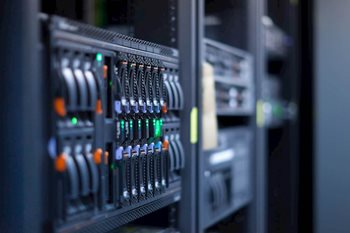This infrastructure is offered by desktop virtualization or cloud VDI. In this article, we will discuss the technology behind VDI solutions.
Understanding desktop virtualization
Desktop virtualization is a technique that hosts every workstation in the office on a centralized server. This means that your desktops are virtually using resources of a remote server, including storage, RAM, hypervisor, load balancer, etc. Access to these desktops is offered virtually over a network, which can be an internet connection. This network can be accessed easily in every office, workplace, or remote working station via the cloud.
If you look at it this way, desktop virtualization is the soul of virtual workplaces.
Deployment models
We can deploy desktop virtualization in different forms, such as virtual desktop infrastructure, Desktop as a Service, or remote desktop services. Check the details below:
Virtual desktop infrastructure
Virtual desktop infrastructure is where it all started. Using VDI architecture, we virtually run our operating system through a data center. On this data center, we create a virtual machine with our resources, and an image of these resources travels to the user's end devices. This end device opens the virtual machine, which usually interacts with apps and data as a local device.
With VDI solutions, every user gets one virtual desktop with its drivers, memory, CPU, RAM, etc. These resources are being operated via a hypervisor that allows seamless resource allocation to different virtual machines of the office.
Desktop as a Service
Desktop as a Service (DaaS) is a cloud VDI solution that we can access via a cloud server. All your resource requirements, such as OS, RAM, CPUs, etc., are on the cloud. From there, the provider creates a secure network to fetch data virtually. End users open the cloud instance on their end devices and access virtual machines.
You can ideally fluctuate resources on the cloud to increase or decrease your performance, storage, workloads, etc.
Remote desktop services
In remote desktop services, businesses can use virtual desktops from Microsoft's server. All the applications and data are on the Microsoft cloud. You get your desktop images via the remote desktop protocol of Microsoft.
If you look at it, then DaaS, VDI, and RDS are all very similar. Depending on your organization's needs, you can select one infrastructure that best suits your performance and storage needs.
The technology behind cloud VDI
Desktop virtualization is a valuable invention that allows us to secure our systems, centralize our infrastructure, and lower management costs. When you host it on the cloud, you can receive this centralized implementation via an internet connection.
While the entire architecture is appealing and beneficial for the business, what is the technology behind VDI solutions?
1. Operating systems
The VDI technology uses either workstation or server operating system. When it was first launched, we knew VDI as the workstation operating system, but today, we see advanced versions.
Every cloud VDI instance is either one: many alignments or one: one alignment. Of course, here, one: many means multi-user, and one: one means single user. For instance, if you are virtualizing one desktop, you would use one: one alignment. But, if you have to use desktop virtualization to create many desktops from one OS, then we use one: many.
2. Display protocol
Every desktop uses a remote display protocol to open one session for computing resources. Therefore, the end devices should either use client software or HTML5 session to open session protocol.
Remote display protocols can be:
- Citrix: Enlightened Data Transported (EDT) and Independent Computing Architecture (ICA)
- Microsoft: Remote Desktop Protocol (RDP)
- VMware: PC over IP (PCoIP) and Blast Extreme
3. Hypervisor
When setting up a Virtual Desktop Infrastructure, you need to use a hypervisor that helps you host machines. For example, you can use any hypervisor for Citrix Virtual Apps, but VMware needs ESXi hypervisor only.
A hypervisor is nothing but a device that helps us create virtual machines. This means it is important for desktop virtualization deployment and maintenance of the same. This technology is key to making your data center allow many, many VMs to share the same resources of the server.
No matter the type of desktop virtualization or VDI solution you use, this hypervisor is there. Even if you use DaaS, where you are not responsible for setting up the infrastructure, your cloud provider may set up a hypervisor to smoothly run the backend.
4. Storage
Storage used in desktop virtualization is centrally allocated to the server or data centers. For example, if you are using cloud VDI, then the cloud server fulfills the storage needs of virtual machines you are using in your office. We need to use a load balancer and other technology to ensure the performance of different virtual machines and VDI solutions.
5. Persistent or non-persistent deployment
During desktop virtualization, you can use two types of deployments: non-persistent and persistent VDI solutions. Let's see what these are:
The persistent VDI is where the virtual machine is reserved when you log in and log out. Your end-users can set up these machines as per their needs, such as custom shortcuts, apps, screensavers, and passwords. These types of virtual machines have high customization capabilities.
Contrary to this, non-persistent VDI refreshes whenever you log in to it each time. This means that every time you access this desktop, it will refresh as soon as you turn it off. These types of desktops return to their original state once you stop using them. This type of VDI solution is widely used because it is easy to manage and requires less storage.
Final thoughts
Desktop virtualization is available in the form of DaaS, virtual desktop infrastructure, and remote desktop services. In all these deployments, the underlying technology is the same. The only difference is how we are using virtualization. On the cloud, you can reduce costs and receive everything as a managed service. On-premise, you can receive these services with a strong IT team. Evaluate the working of VDI solutions and deploy the right type depending on your organizational requirements.
Access the latest business knowledge in IT
Get Access



Comments
Join the conversation...